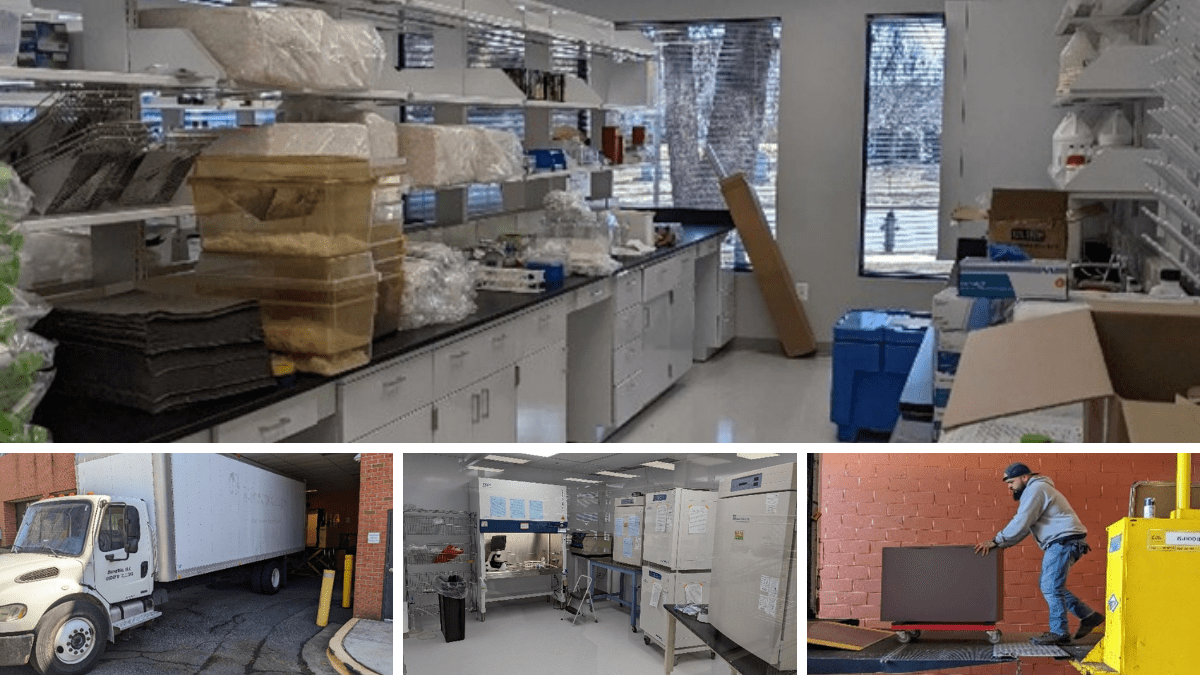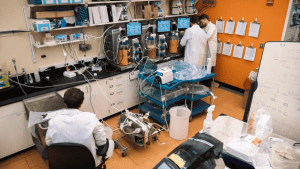
Seraxis Growth Leads to Expansion and a Complex Move to New Facilities
After more than a year of searching and planning, Seraxis found a new home in Montgomery County. With the assistance of experienced life sciences logistics company BaneBio, Seraxis was able to seamlessly move into its new facility earlier this year without interrupting its plans to scale and guide its lead cell therapy into the clinic.
Following the close of a $40 million Series C financing round in 2021, Carole Welsch, Chief Business Officer of Seraxis, said the company knew finding a new location was necessary if the diabetes-focused company wanted to grow and scale. In March of that year, months after the financial raise was announced, Seraxis began to search for the new space. Welsch said the search took some time, particularly given the ongoing COVID-19 pandemic and the limited availability of space. After a few months of service, Seraxis found the ideal location in a new facility in Montgomery County, which is where the company wanted to remain after launching in 2013 with its Series A financing. The new space would triple the company’s existing space in the Germantown Innovation Center (GIC) at Pinkney Innovation Complex for Science & Technology at Montgomery College (PIC MC).
Moving isn’t an easy process in the best of times, and moving a cell therapy company can be even more stressful given the type of equipment used by Seraxis. But, that stress was greatly mitigated by BaneBio, a Frederick-based company that focuses on scientific equipment transportation, warehousing, packaging, repair and maintenance services, and more. The company has successfully moved many companies in the BioHealth Capital Region over the past 10 years.
Welsch said Seraxis had previously worked with BaneBio and was eager to work with them again to facilitate the move.
“We were fortunate to have a relationship with BaneBio. We were not aware of all the services they offer but by the end of the move, we apparently used all of their services,” Welsch joked. “The move is very stressful but even more so with equipment that is so expensive and sensitive. It was fantastic to have them.”
Seraxis is a cell therapy company focused on developing cell replacement therapy for insulin-dependent diabetes patients. The company’s lead asset is SR-01, which is being developed to eliminate the need for type 1 diabetes patients to inject insulin. The Seraxis approach to diabetes treatment seeks to replace damaged or lost insulin-producing pancreatic cells with those grown in the Seraxis labs. Those cells were developed with the company’s proprietary human stem cell line, SR1423. Welsch said the company is “racing to the clinic” with SR-01. Seraxis is currently preparing an Investigational New Drug Application for SR-01. She said that is expected to be submitted in early 2023 and, if all goes well, SR-01 could begin Phase I testing in the middle of the year.
BaneBio played a critical role by not only moving Seraxis into its new space but also enabling the company to continue operations during that time. BaneBio secured loaner equipment for Seraxis that allowed the company to continue working with its cell cultures while its coolers and lab equipment was installed and calibrated at the new location.
Doug Bane, president and chief executive officer of BaneBio, explained that moving Seraxis was more than just moving the lab contents. BaneBio was able to provide cold storage units where contents could be transferred into while the company units were moved into the new location and became temperature stabilized.
“We never stopped our cell cultures. We essentially had two running labs in parallel,” Welsch said.
Additionally, there was a concern about furniture. Seraxis had ordered new office furniture for the company’s new headquarters. Although there was some disruption in the supply chain, the furniture was delivered prior to the new site being available for Seraxis. BaneBio was able to provide the company with warehouse space to store the large pallets of office furniture. Once the new space was available, that furniture was transported over to the site and assembled, Bane said.
On March 7, Seraxis officially moved into its new facility and has been able to continue its work without any interruption.
With the new space, Seraxis has begun to scale up and Welsch said the company anticipates having approximately 20 employees by the end of the year. Since the close of the Series C, Welsch said the company had four employees and the company has grown to its current headcount of one dozen. Some of Seraxis’ hiring needs include adding senior leadership team members, including a chief medical officer. The company has found a good candidate for that position, Welsch said and is preparing to soon make an offer.







